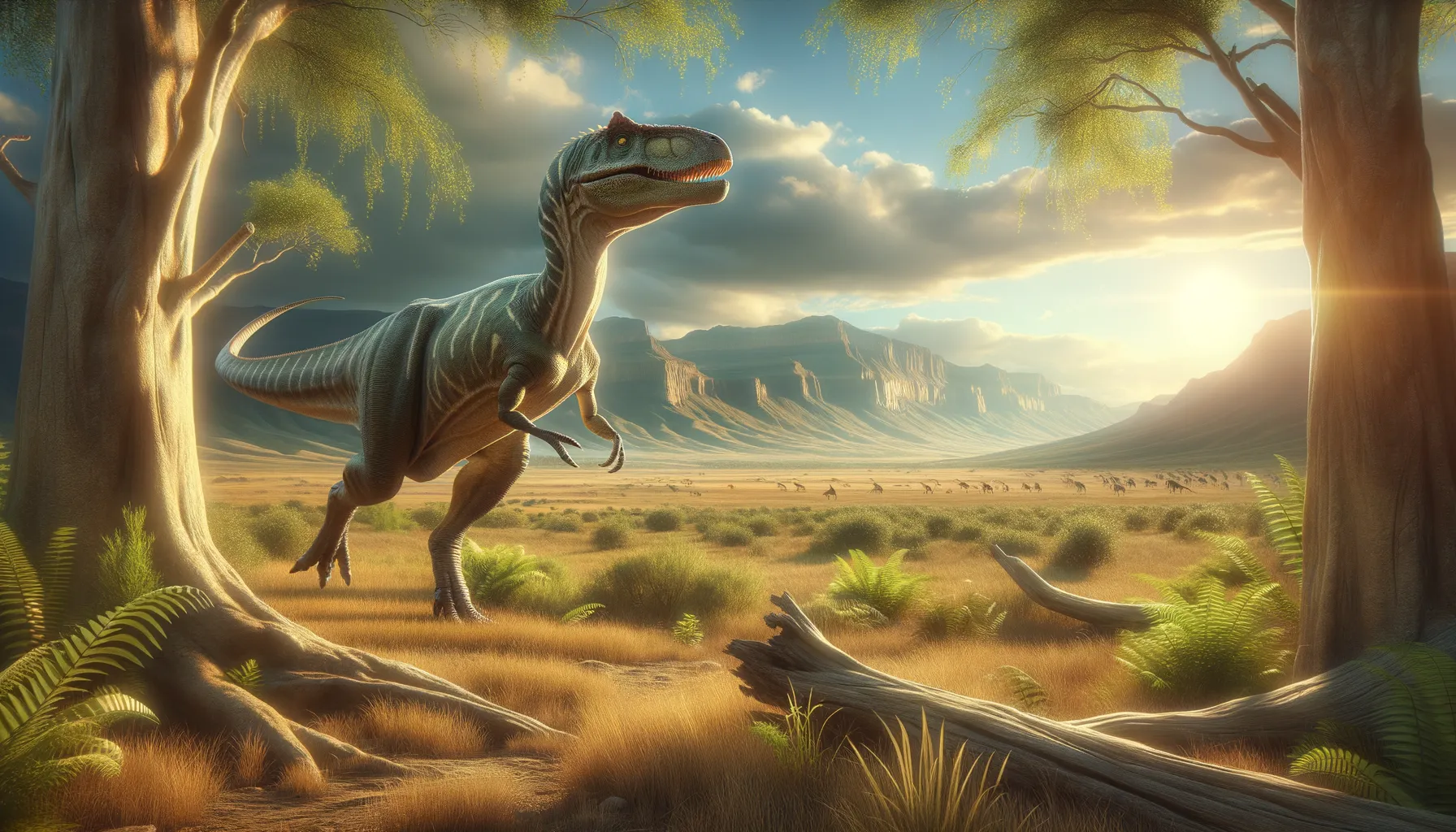
Ornithomerus
Swift predator of ancient landscapes.
Period
Cretaceous
Length
Measured about 6 meters in length.
Height
Stood around 2 meters tall.
Weight
Approximately 200 kilograms.
This dinosaur was a swift, bipedal creature known for its lean build and long legs, which helped it cover ground quickly. It thrived during the Cretaceous period, roaming vast plains and open forests. Paleontologists have uncovered many bones of this dinosaur, allowing them to paint a detailed picture of its life and behavior. Its fossilized remains showcase a fascinating evolutionary history that provides insight into the era in which it lived.
Diet
Primarily a carnivore, it hunted smaller dinosaurs and mammals. It may also have scavenaged from carcasses left by larger predators.
Hunting
It relied on its speed to chase down prey, using agility to outmaneuver them. Its sharp teeth and claws were essential tools for capturing and consuming its meals.
Environmental challenges
As an inhabitant of its time, this dinosaur faced volcanic eruptions and climate shifts that altered its habitat. The periodic scarcity of food due to changes in the ecosystem would have posed survival challenges. Competition with other predators must have been fierce, making it necessary to adapt quickly to survive.
Speed
Known to be agile and fast-moving.
Lifespan
Lived between 15 to 25 years in the wild.
First discovery
Unearthed in the late 19th century in North America.
Fun Facts
- Ornithomerus was a dinosaur that lived during the Cretaceous period, around 100 million years ago.
- Its name means 'bird thigh' because of the bird-like shape of its leg bones.
- Ornithomerus was a relatively small dinosaur, estimated to be about 4 to 6 meters long.
- It was a bipedal dinosaur, which means it walked on two legs.
- Ornithomerus was likely an omnivore, feeding on plants and small animals.
- The dinosaur's remains have been found in present-day Hungary.
- Ornithomerus is still somewhat of a mystery, as its classification and habits are not fully understood.
Growth and Development
Like many dinosaurs, it is believed to have experienced rapid growth during the early years of its life. Fossil evidence suggests that it gradually developed distinctive features like sharp claws and powerful limbs. It likely reached full size by the time it was a few years old, giving it a better chance to thrive in its environment.
Habitat
This dinosaur's habitat likely included open plains and forested areas. Access to water sources would have been crucial for survival. The diverse environment provided ample opportunities for hunting.
Interaction with other species
It may have competed with similarly sized predators for food. In some periods, it possibly coexisted with larger herbivorous dinosaurs. Its interactions likely influenced the evolution of other species within its ecosystem.
Natural lifespan
In the wild, it could reach up to 25 years.
Reproduction
Reproductive behavior likely involved laying eggs in sheltered nests. Evidence suggests parental care, with potential guarding of nests against predators. The offspring were believed to be precocial, meaning they were relatively mature and mobile from birth.
Social behaviour
It might have exhibited solitary behavior or lived in small groups for hunting. Social interactions were likely important for establishing dominance and territory. Communication may have been done through vocalizations and physical displays.
Fossil locations
Fossils have been primarily discovered in North America. Significant sites include various regions across the United States and Canada. These discoveries have helped build a comprehensive understanding of its lifestyle and habitat.
